Why A Hex Beam:
I've always used verticals and wire antennas only because I've
never had the room to put up anything bigger. Know that I
own a home which is a small city lot. I'm able to put up some type
of antenna. I was thinking of a tri-bander, but that would mean
using a roof mounted tower, putting holes into the
roof and opening up the ceiling in the finished attic. Not to mention the elements alone would be longer
then the house. A 14 foot boom is fine. It's just the elements that seem to be the problem.
After hearing and working a few stations using the Hex Beam and no
amplifier, with very strong signals in my location, I decided to look into what a hex beam is.
Lots of internet research, emails to a few of those using it, and looking for an antenna with some
gain and front to back rejection,
I decided to build one. This seemed like the best choice
for my situation.
Notice:
To view image(s) in this area just
place your move over the image...
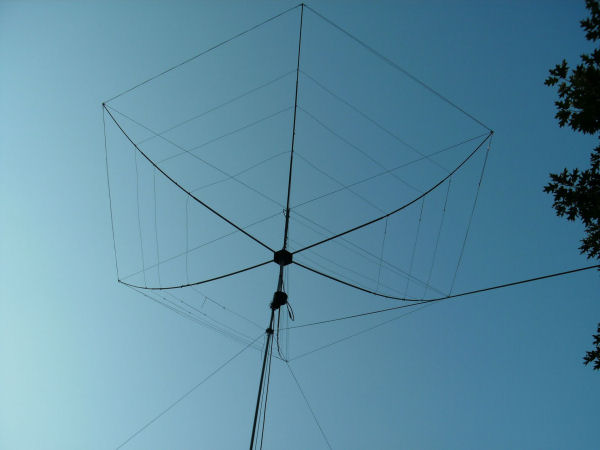 A hexagonal beam offers many features such as
gain and front to
A hexagonal beam offers many features such as
gain and front to back that's comparable to a two
element beam. It can be configured for 5 bands with very low swr, broad band characteristics with low noise performance
and it is somewhat light weight with low wind load. I built mine to work on four bands,
10,15,17 and 20 meters. I decide not to add 12 meters. You'll also
find out that you will end up with a bonus band and that's six
meters. A tuner will be required to tune the six meter band. However, you could place an element in front of the 10 meter element
for six meter to get a much better swr reading, and that would
eliminate the higher swr and the need of an antenna tuner. I found
the swr to be about 2:1 on six meter.One of the things that's really great about this antenna is
that you will not need an antenna tuner. I'm able to work all of the
20 meter band which is one of my favorite bands, and use my
Ameritron AL80a amplifier with out the antenna tuner in line. However, the swr is slightly higher on 17 meters.
There are two versions of the Hex Beam. One being the classic version.
The other is the broad band version which I chose to build. The
inventor of the broad band Hex Beam is Steve Hunt G3TXQ.
There's six steps to prepare for in order to build a Hex Beam.
You can do this in any order that works for you.
For construction details used the (Menu) option located to the
left.
UP Date November 16, 2011:
My HexBeam has been up since the spring of 2009 to October 28, 2011
until the ice storm of October 31, 2011 came along. It was not so
much that the ice
damaged the antenna. It was the branches from a close by tree. The
weight of the ice on the branches came down very low and was hung
up under the 20 meter elements, which then took out two of the
spreader on the Hex Beam. Looking at the picture below it looks
worst then it really was.
I have removed the two trees that damaged the antenna and have
re-built the HexBeam as well as replacing the push up pole with a
crank up mast..
Place your cursor over top of any image for a larger view....
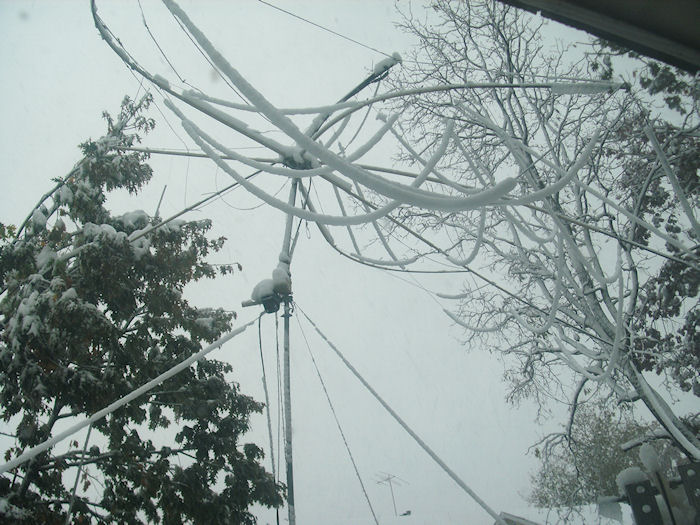 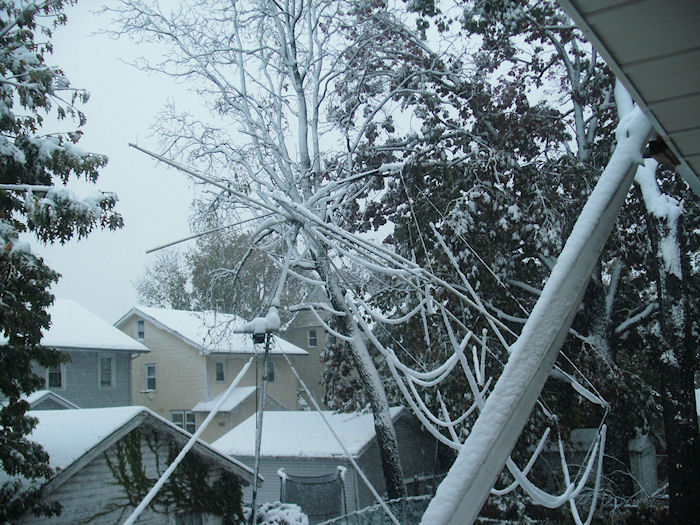 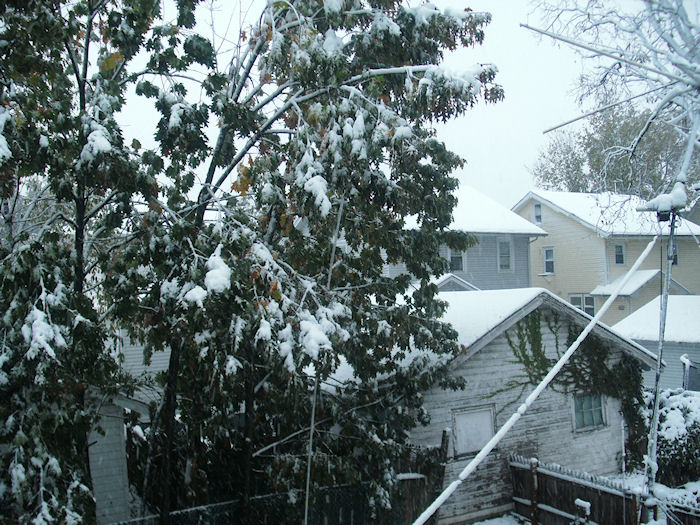
Here's a picture of another tree. Here we are after the ice storm
taking down the Hex Beam. My friend John W2IMX and Robert not in the
picture but taking pictures
KB2UDM. Here we are looking over the damage to the HexBeam. Looks
like I just need two of the center section of two spreaders. So not
a lot of damage done.
But trees will have to be removed before putting the antenna backup.
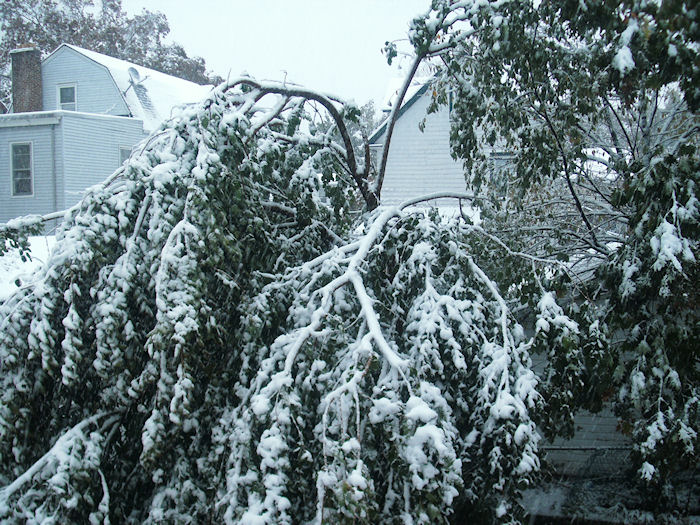 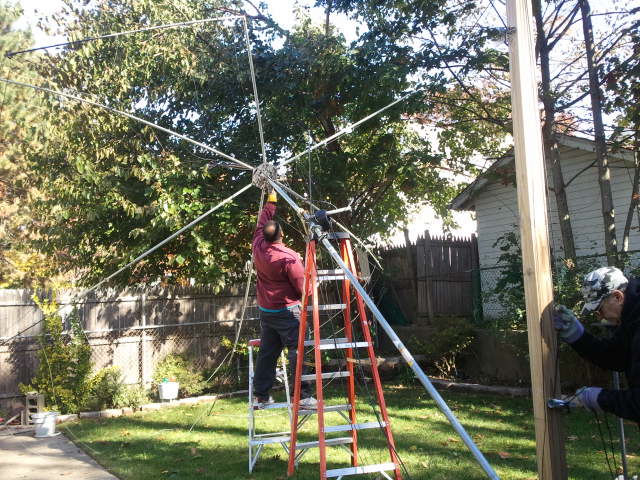 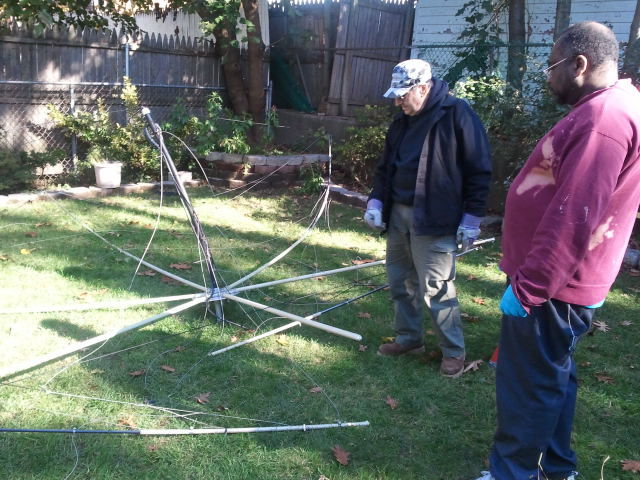
To see the new antenna mast setup check the Ant Installation
page.
|
|